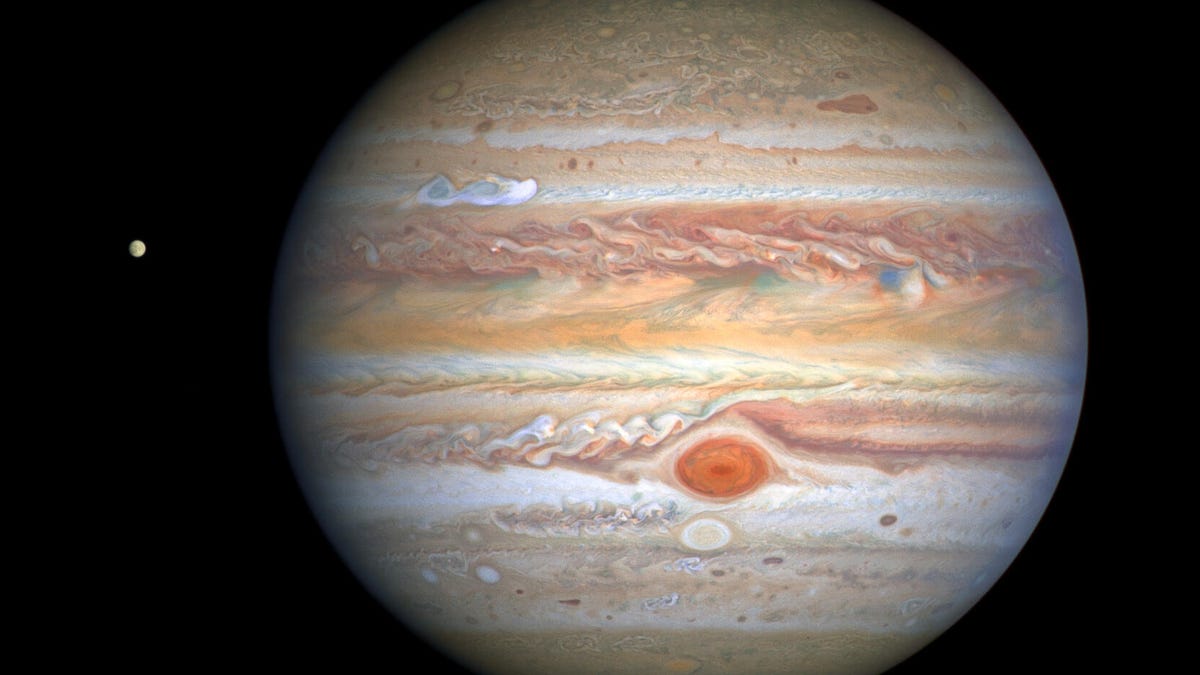Jupiter's Great Red Spot stars in gorgeous new Hubble telescope view
Get your mind off this rock and go visit Jupiter through a fresh NASA and ESA snap of the gas giant.
Jupiter is nothing like Earth. The gas giant's swirling, tumultuous atmosphere is riddled with wild storms. The planet's colorful cloud bands stand out in a striking fresh Hubble Space Telescope image captured on Aug. 25.
The view from 406 million miles (650 million kilometers) away is beautifully crisp thanks to Hubble's keen eye. The telescope is a joint project between NASA and the European Space Agency.
Scientists are particularly excited about a fast-moving new storm that erupted in mid-August. It shows up as a bright white area towards the upper left of the planet. NASA said "the timing of the Hubble observations is perfect for showing the structure in the wake of the disturbance, during the early stages of its evolution."
If you look closely, you can also see Jupiter's fascinating moon Europa in the dark off to the left. NASA is developing a mission to visit the icy world, which could be a prime spot to check for alien life.
Hubble's Jupiter portrait highlights the planet's most famous feature. "The iconic Great Red Spot, a storm big enough to swallow Earth, shows that it's shrinking a little in the Hubble images, but it still dominates the entire southern atmosphere, plowing through the clouds like a cargo ship," said NASA in a release on Thursday.
Research shows the Great Red Spot is getting smaller, and the cause of the size change is unknown. Scientists still expect it will hang around for years, and hopefully for more Hubble portraits like this one. The space telescope has seen its share of technical glitches, but has never surrendered.
See also: These telescopes work with your phone to show exactly what's in the sky


